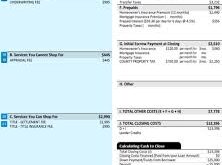Subprime Mortgage Meaning: the Risks and Benefits. A subprime mortgage is a type of home loan offered to borrowers with low credit scores or a limited credit history. These loans typically come with higher interest rates and less favorable terms to compensate lenders for the increased risk of default. Unlike prime mortgages, which require high credit scores and strong financial stability, subprime mortgages are designed for individuals who may not qualify for traditional loans.
How Do Subprime Mortgages Work?
Subprime mortgages function similarly to conventional mortgages but differ in key aspects such as interest rates, repayment terms, and qualification criteria. Borrowers with a FICO score below 620 are often classified as subprime borrowers. Lenders assess risk based on credit history, debt-to-income ratio, and employment stability.
Key Features of Subprime Mortgages:
- Higher Interest Rates: Due to the increased risk, subprime mortgages come with higher annual percentage rates (APRs).
- Adjustable or Fixed Rates: Some subprime loans have adjustable interest rates (ARMs), which may increase over time.
- Flexible Approval Criteria: Borrowers with past bankruptcies, missed payments, or high debt levels may still qualify.
- Higher Fees and Penalties: Prepayment penalties and high closing costs are common.
Pros and Cons of Subprime Mortgages
Pros:
- Homeownership Access: Allows individuals with poor credit to own a home.
- Potential for Credit Improvement: Making timely payments can improve a borrower’s credit score.
- Flexible Qualification Criteria: Lenders may be more lenient compared to traditional mortgage providers.
- Refinancing Opportunities: Borrowers may qualify for better rates in the future.
Cons:
- Higher Costs: Increased interest rates lead to higher monthly payments.
- Risk of Foreclosure: Borrowers struggling with payments may face foreclosure.
- Variable Interest Rates: Adjustable-rate mortgages can result in unexpected payment hikes.
- Predatory Lending Risks: Some lenders may engage in unethical practices, leading to financial hardship.
Types of Subprime Mortgages
- Adjustable-Rate Mortgage (ARM): Offers a low initial rate that later adjusts based on market conditions.
- Interest-Only Mortgage: Borrowers pay only interest for an initial period, leading to large future payments.
- Balloon Mortgage: Requires a large lump sum payment at the end of the term.
- Fixed-Rate Subprime Mortgage: Has a fixed but high interest rate throughout the loan duration.
Who Should Consider a Subprime Mortgage?
Subprime mortgages are suitable for borrowers who:
- Have low credit scores but need immediate homeownership.
- Expect financial improvement in the near future.
- Can afford higher payments but lack the credit history for a prime loan.
Tips for Managing a Subprime Mortgage
- Improve Your Credit Score: Pay bills on time and reduce debt.
- Shop Around for Lenders: Compare rates and terms from multiple lenders.
- Read the Fine Print: Understand all loan terms, fees, and penalties.
- Consider a Fixed-Rate Option: Avoid variable rates that may increase later.
- Make Larger Down Payments: This can reduce loan costs and interest rates.
- Avoid Predatory Lenders: Work with reputable financial institutions.
- Check Refinancing Options: Seek better terms once your credit improves.
- Set a Realistic Budget: Ensure you can handle monthly payments comfortably.
- Monitor Your Loan Terms: Keep track of interest rate changes if you have an ARM.
- Seek Financial Advice: Consult a mortgage professional before making decisions.
Frequently Asked Questions (FAQs)
1. What credit score is needed for a subprime mortgage? Typically, a FICO score below 620 qualifies as subprime.
2. Are subprime mortgages safe? They carry risks, but responsible borrowing and understanding loan terms can reduce them.
3. Can I refinance a subprime mortgage? Yes, if your credit score improves, refinancing may offer better terms.
4. Do subprime mortgages have fixed rates? Some do, but many have adjustable rates that may rise over time.
5. Why do subprime mortgages have higher interest rates? Lenders charge more to offset the risk of lending to borrowers with poor credit.
6. Can I qualify for a subprime mortgage with no credit history? Yes, but you may face even higher interest rates or additional requirements.
7. Are subprime mortgages the same as bad credit loans? They are similar, but subprime mortgages are specifically for home purchases.
8. What happens if I miss payments on a subprime mortgage? Missed payments can lead to foreclosure and further damage to your credit score.
9. Are subprime mortgages still available today? Yes, but regulations have tightened after the 2008 financial crisis.
10. How can I avoid predatory subprime lending? Work with reputable lenders, read all terms carefully, and seek professional advice.
Conclusion
Subprime mortgages provide a pathway to homeownership for individuals with less-than-perfect credit. However, they come with higher costs, potential risks, and long-term financial obligations. Borrowers must carefully evaluate their financial situation, compare options, and seek professional advice to make an informed decision. By managing payments responsibly and improving credit scores, subprime borrowers can eventually transition to better loan terms and long-term financial stability.
 mortgage.kbk.news
mortgage.kbk.news
